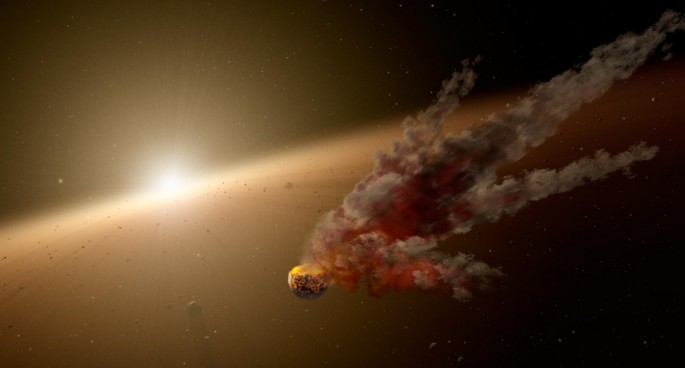Next month, a huge chunk of flying space junk will enter Earth's atmosphere where scientists will be able to study how objects from outer space will react once they hit the planet's atmosphere.
This object also known as WT1190F will be expected to enter Earth's atmosphere on November 13 right above the Indian ocean, some 62 miles away from southern Sri Lanka. Experts say that this impact will not pose any risk to people.
According to Tim Flohrer from the European Space Agency's (ESA) Space Debris Office, this object is quite small, measuring almost a couple of meters in diameter where most of it is predicted to burn completely upon entry in the atmosphere.
ESA officials say that when WT1190F burns up in the atmosphere, witnesses near the entry site can view a bright fiery ball during daytime on November 13.
Last October 3, WT1190F was detected by the Catalina Sky Survey in Arizona as astronomers monitored and took images of the object since 2013. Their observations reveal how WT1190F is orbiting the planet every three weeks on a highly elliptical path.
Apart from its trajectory, astronomers also discovered how this flying space object is not made from dense material similar to a rocky body like an asteroid, which means that this is probably floating space junk or debris.
According to Detlef Koschny who manages near-Earth object (NEO) activities at ESA's Space Situational Awareness program, the density of this object is similar to a hollow shell which could be a used upper stage of a rocket or part of a rocket stage.
Today, Earth is enshrouded in a growing cloud of space junk or floating debris from more than 20,000 objects the size of a softball and 500,000 objects that are larger than a marble, including millions of shards and pieces to small to track down, according to NASA.
For WT1190F, scientists are keeping a close watch where astronomers will study it upon atmosphere re-entry in order to observe what happens when space junk comes crashing down on Earth. Space junk is also usually composed of satellites and debris with highly eccentric orbits says Marco Micheli from ESA's NEO Coordination Center in Italy.



























